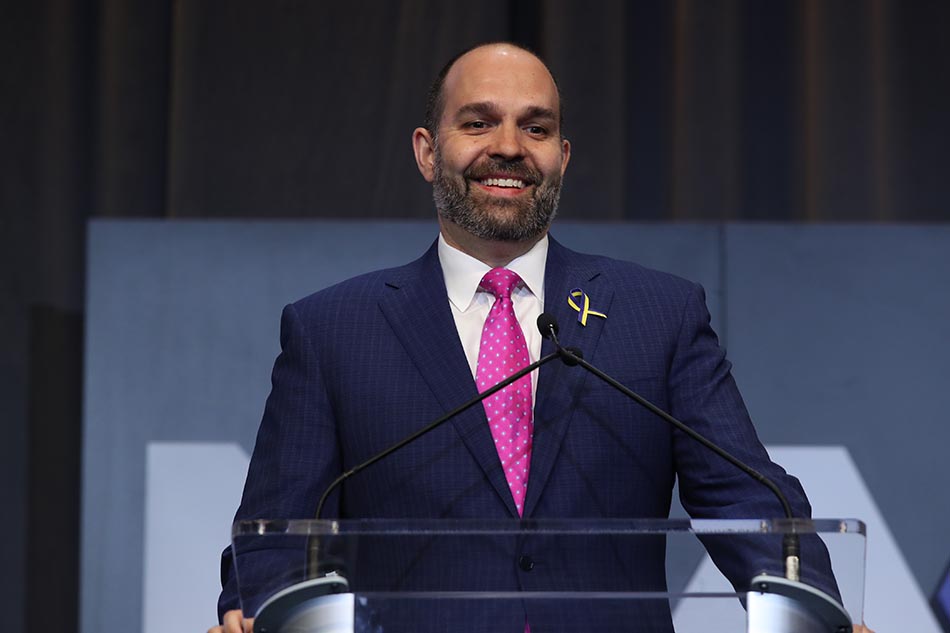LeGeyt: NAB Wants FCC to Look at Regulating Streaming Video
In interview, NAB chief says trade group seeks new round of comments on dormant proceeding

The National Association of Broadcasters is looking to get the FCC to classify over-the-top video services as multichannel video programming distributors (MVPDs) subject to carriage and program-negotiation obligations.
Under then-chairman Tom Wheeler, the Federal Communications Commission opened a proceeding in 2014 on whether video services should have to be facilities-based -- wires, satellites -- to be subject to the agency’s rules applying to MVPDs, or whether over-the-top services delivered by broadband providers but without their own physical facilities should qualify as well. That proceeding remains open, but dormant.
Wheeler was looking to promote over-the-top (OTT) video as a competitor to traditional cable and to anticipate traditional cable's move to internet protocol-based delivery of its multichannel services.
NCTA-The Internet & Television Association has long argued that a transmission path is necessary to be an MVPD.
In an interview with Politico Pro, NAB president and CEO Curtis LeGeyt said the NAB’s board has decided to ask the FCC to collect new feedback on the Wheeler proposal given “changes in the marketplace.” LeGeyt told Politico Pro that the association wanted to "re-engage with the FCC” on the issue.
Broadcasters, facing major competition for eyeballs from over-the-top video, have also been pushing the FCC to make streamers and other edge providers pay FCC user fees. The commission supports its ongoing operations on those fees, currently levied on broadcasters, cable operators and satellite operators, but not edge providers.
Broadcasters have argued that the FCC should not continue to burden broadcasters with helping subsidize their online competitors for eyeballs and ads by charging broadcasters a fee and not big tech. The FCC recently declined to add Big Tech to its fee schedule.
Broadcasting & Cable Newsletter
The smarter way to stay on top of broadcasting and cable industry. Sign up below
The FCC’s effort to bring over-the-top video under its program carriage and access rules dates back almost a decade.
In 2014, Wheeler proposed to reverse a tentative, bureau-level conclusion in the Sky Angel program-access complaint that having a facilities-based transmission path was necessary to be an MVPD. The FCC tentatively concluded that an MVPD has to have control of both the content and the transmission path — copper, fiber and satellite signals delivering a channel — and that an OTT distributor lacks that path since it does not control a facilities-based channel to deliver it.
The FCC signaled in the 2011 Comcast-NBCUniversal merger approval that it expected over-the-top video to become a competitor to traditional MVPDs going forward and, therefore, included conditions requiring the company to make its programming available to OTT providers on nondiscriminatory terms and conditions.
The American Television Alliance, whose members include cable and satellite operators, was not pleased with the signals out of NAB.
“The broadcast industry wants to take the current framework, which is already responsible for thousands of consumer blackouts and massive annual price increases, and expand it to streaming,” ATVA spokesperson Jessica Kendust said. “The FCC should focus on modernizing and fixing the broken system, not imposing new costs on streaming customers.”
An NAB spokesperson was not available for comment at press time. ■
Contributing editor John Eggerton has been an editor and/or writer on media regulation, legislation and policy for over four decades, including covering the FCC, FTC, Congress, the major media trade associations, and the federal courts. In addition to Multichannel News and Broadcasting + Cable, his work has appeared in Radio World, TV Technology, TV Fax, This Week in Consumer Electronics, Variety and the Encyclopedia Britannica.

